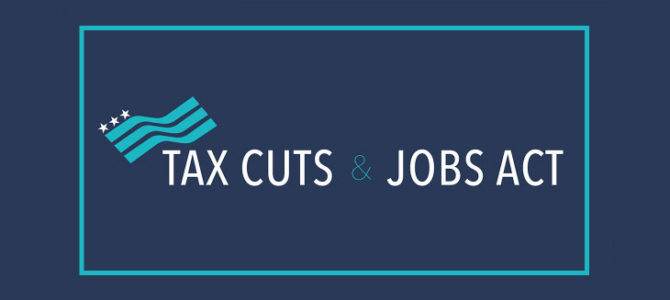The Tax Cuts and Jobs Act was signed by President Trump on December 22. The Act makes sweeping changes to the U.S. tax code and impacts virtually every taxpayer. Individuals are more impacted by the provisions of the act than any other class of taxpayer. With the reduction in effective tax rates, the elimination of some deductions, exclusions, and credits coupled with the enhancement of other deductions and credits, individual taxpayers are going to have to navigate a different maze in making decisions to maximize their tax benefits and minimize their tax liability.
The major goal of tax reform is to simplify tax filing. Provisions of the 2017 Tax Cuts and Jobs Act affecting all individuals is the elimination of the deduction for personal exemptions and the near doubling of the standard deduction. The higher standard deduction that replaces the personal exemption, will cut, by more than half, those taxpayers who would otherwise do better by itemizing deductions. Of course, that group will realize less of a net tax benefit than those taxpayers who do not now itemize. Supporters argue that, in addition to simplification, it effectively creates a more broadly applicable “zero tax bracket” for taxpayers earning less than the standard deduction amount.
The loss of many itemized deductions will channel an even greater number of taxpayers to the standard deduction. There are new limits on mortgage debt for purposes of the mortgage interest deduction. Annual itemized deductions for all state and local taxes, including property taxes, is capped at $10,000. The threshold for medical expense deductions is lowered to 7.5 percent of adjusted gross income (AGI) for tax years 2017 and 2018 and casualty losses will only be allowed for losses in federally declared disaster areas. For a large number of taxpayers, their total itemized deductions will no longer exceed the standard deduction.
An enhanced child and family tax credit will make up some of the difference for certain families. As a credit, in contrast to a deduction, the enhanced child credit has been highlighted as one of the provisions that will lower overall tax liability for middle-class families.
These are just highlights of the changes and impact of the Tax Cuts and Jobs Act. There is much more to discuss than can be covered in this letter, including changes to the education benefits, alternative minimum tax, and the individual mandate, to name a few. Tax reform is further complicated because many of the changes are temporary, generally ending after 2025. Therefore, a comprehensive tax plan must be flexible and anticipate either expiration of these changes or possible extenders in years to come.
We are focused on the immediate and long-term impact of the Tax Cuts and Jobs Act on your situation. Please call our office for guidance on all of the provisions that directly affect you.





